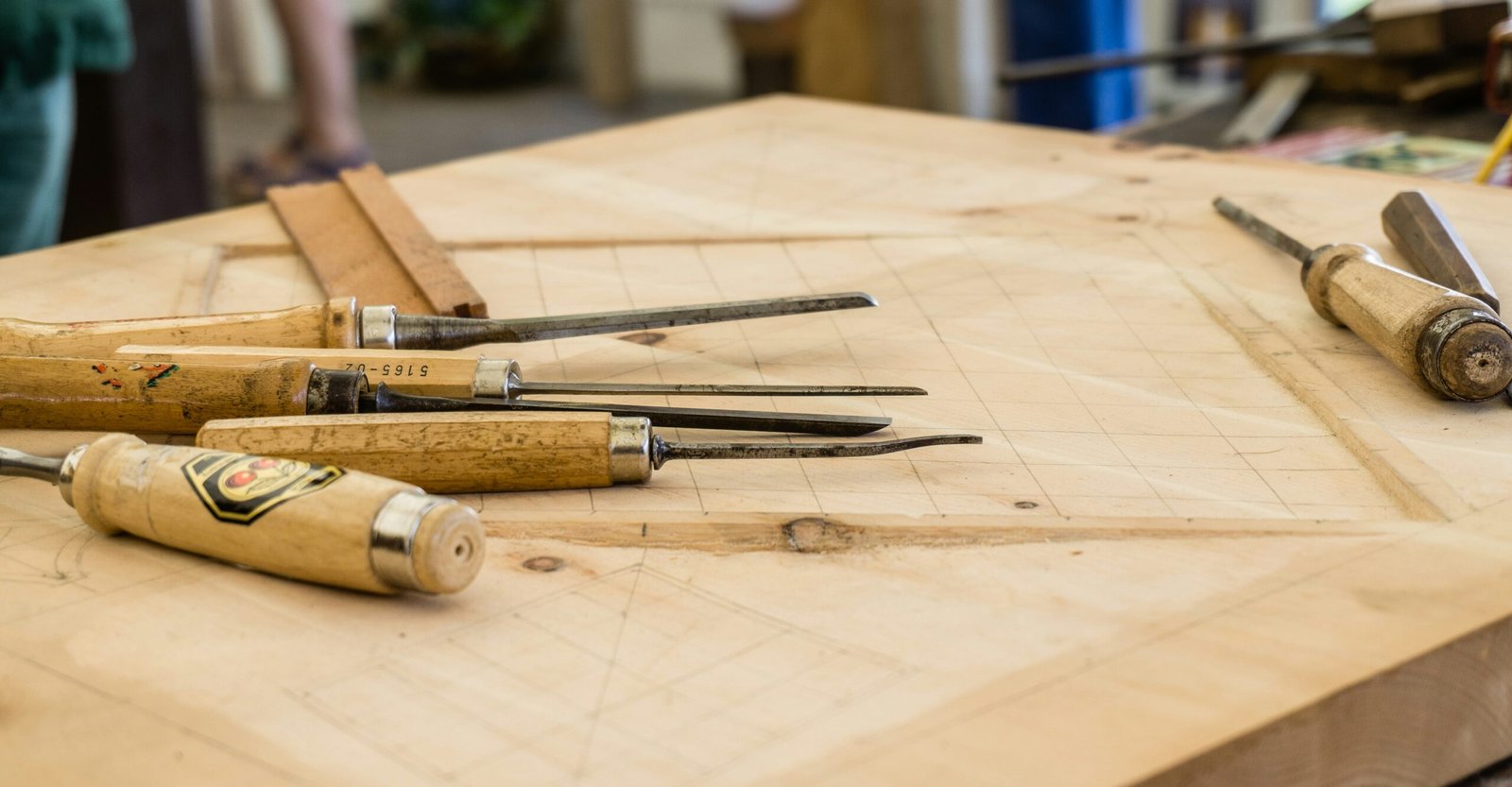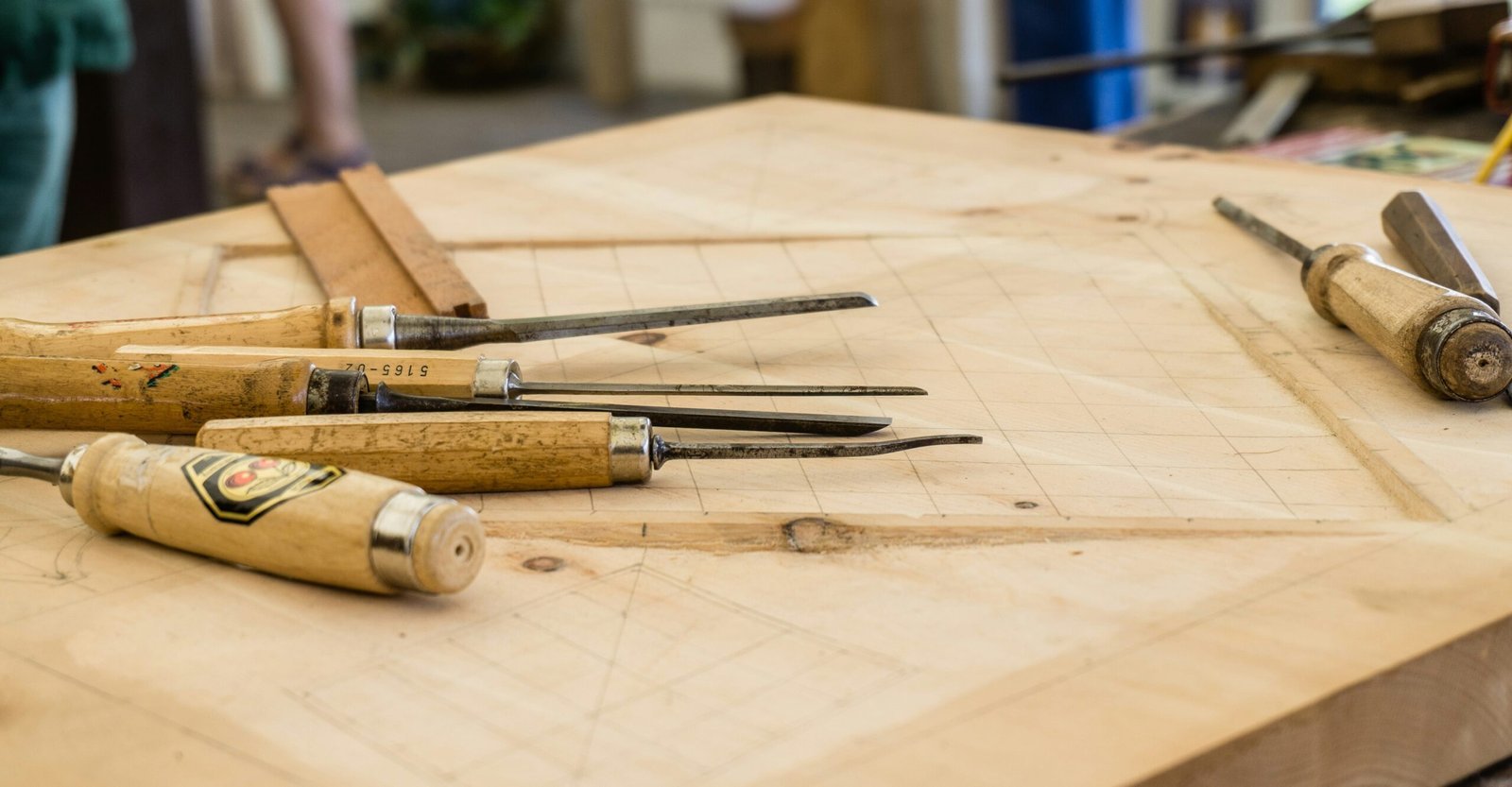

Understanding the Basics of Woodworking
Woodworking is a craft that has been practiced for centuries, offering a fulfilling and creative outlet for individuals. To embark on this journey, it’s essential to understand the fundamental concepts of the trade. Woodworking encompasses various disciplines, including carpentry, joinery, and cabinet making. Carpentry typically involves constructing larger wooden structures such as frames and roofs, while joinery focuses on creating joints and assembling smaller wooden items. Cabinet making, on the other hand, specializes in crafting detailed furniture pieces and cabinetry.
To get started, familiarizing oneself with the basic tools is crucial. Hand tools such as chisels, saws, and hammers are foundational instruments in woodworking, providing precision and control. Power tools like electric saws, drills, and sanders can enhance efficiency and ease of work, especially for beginners. Ensuring that tools are sharp and well-maintained is essential for both safety and quality of work.
Selecting the right type of wood is another critical aspect. Common types of wood used in woodworking include softwoods like pine and cedar, which are easier to work with and ideal for beginners. Hardwoods such as oak, maple, and walnut offer durability and a fine finish, though they may require more skill to handle effectively. Understanding the characteristics of different woods, such as grain patterns and hardness, is vital for achieving the desired outcome in a project.
Safety should always be a top priority in woodworking. Proper handling of tools, wearing protective gear such as goggles and gloves, and maintaining a clean workspace are essential practices. It’s also important to be aware of potential hazards, such as dust inhalation and accidental cuts, and to take preventative measures accordingly.
A brief look into the history of woodworking reveals its rich heritage. From ancient Egyptian furniture making to medieval European carpentry, woodworking has evolved significantly over the centuries. This historical context not only provides inspiration but also underscores the enduring value and artistry of the craft. By understanding the basics and respecting the traditions of woodworking, beginners can confidently start their journey in creating beautiful, functional pieces.
Essential Tools and Materials for Beginners
Embarking on a journey into woodworking can be both exciting and daunting for beginners. The first step is to equip yourself with the right tools and materials. Having the essential tools will not only make your projects easier but also more enjoyable. Let’s explore some key hand tools, power tools, and materials needed to get started.
Hand Tools:
1. Saws: A handsaw is fundamental for cutting wood to size. For more precise cuts, consider a coping saw or a backsaw. Each saw serves different purposes, from rough cuts to intricate curves.
2. Hammers: A claw hammer is essential for driving nails and removing them. It’s a versatile tool that every woodworker should have.
3. Chisels: Wood chisels are used for carving and shaping wood. Beginners should start with a basic set that includes different sizes.
4. Measuring Tools: Accurate measurements are crucial in woodworking. A tape measure, combination square, and a ruler are indispensable for ensuring precision.
Power Tools:
1. Drills: A cordless drill is invaluable for drilling holes and driving screws. Look for one with adjustable speed settings and a comfortable grip.
2. Sanders: An electric sander can save you time and effort when smoothing wood surfaces. Orbital sanders are beginner-friendly and effective for most tasks.
Materials:
1. Wood: Understanding the types of wood is essential. Softwoods like pine are easier to work with and suitable for beginners, while hardwoods like oak are more durable but can be challenging to handle.
2. Nails and Screws: These fasteners are needed to join pieces of wood. Choose galvanized nails and screws for better durability.
3. Wood Glue: Wood glue provides a strong bond and is often used in conjunction with nails and screws for added stability.
Investing in these essential tools and materials will set a strong foundation for your woodworking journey. Take the time to choose quality tools that fit your budget and needs, and you’ll be well on your way to creating beautiful wood projects.
Learning and Building Your First Projects
Embarking on your woodworking journey requires a balanced approach of learning and hands-on practice. For those new to woodworking, selecting beginner-friendly projects is crucial to building foundational skills and gaining confidence. Starting with simple projects like a bookshelf, birdhouse, or picture frame can provide the perfect introduction to essential woodworking techniques.
Begin with a straightforward project, such as a basic bookshelf. This project involves fundamental tasks like measuring, cutting, and assembling wood. Start by measuring and cutting your wood to the desired dimensions. Ensure the cuts are precise to achieve a balanced and sturdy structure. Next, assemble the pieces using wood glue and screws, taking care to align everything properly. Sand the surfaces smooth and finish with your choice of paint or stain.
Another excellent initial project is a birdhouse. A birdhouse is not only practical but also allows you to practice various skills, such as creating angled cuts and using different types of joints. You can find numerous design plans online, ranging from simple to intricate. Follow a step-by-step guide to cut the wood pieces, assemble the structure, and add finishing touches.
For those looking for a smaller-scale project, a picture frame is ideal. This project focuses on precise measurements and miter cuts, which are crucial for creating a professional-looking frame. Start by selecting your wood and cutting the pieces at 45-degree angles. Assemble the frame using wood glue and clamps, ensuring the corners are square. Sand and finish the frame to your liking.
To aid in your learning, numerous resources are available. Books such as “The Complete Manual of Woodworking” provide comprehensive guidance. Online platforms like YouTube offer tutorials from experienced woodworkers, covering everything from basic techniques to advanced projects. Additionally, local community centers or woodworking stores may offer classes for beginners.
As you progress, practice is paramount. Regularly measuring, cutting, and assembling different types of wood will enhance your skills. Start with small projects and gradually tackle more complex ones as your confidence grows. Remember, woodworking is a journey, and each project completed is a step towards mastering this rewarding craft.
Tips for Improving Your Skills and Expanding Your Workshop
As you embark on your woodworking journey, the continuous improvement of your skills is crucial. One effective way to enhance your woodworking abilities is by joining woodworking communities or clubs. These groups offer a wealth of knowledge and experience, providing a platform for sharing ideas, troubleshooting problems, and receiving constructive feedback on your projects. Additionally, attending workshops or classes can provide hands-on learning opportunities and expose you to new techniques and tools.
Seeking mentorship from experienced woodworkers is another invaluable resource. A mentor can offer personalized guidance, helping you to avoid common pitfalls and accelerate your learning curve. Many seasoned woodworkers are eager to share their knowledge and passion for the craft, making mentorship a mutually rewarding experience.
Organizing and maintaining your workshop is essential for efficiency and safety. Implementing smart storage solutions for tools and materials can keep your workspace clutter-free and ensure that everything is easily accessible. Consider using pegboards, shelves, and labeled containers to store your tools systematically. This organization not only enhances productivity but also prolongs the lifespan of your equipment.
As you become more skilled, investing in advanced tools and equipment can significantly expand your workshop’s capabilities. While starting with basic tools is practical, gradually acquiring high-quality, specialized equipment can enable you to undertake more complex projects and achieve finer results.
Keeping a project journal is a beneficial practice for any woodworker. Documenting your projects allows you to track your progress, reflect on what went well, and identify areas for improvement. This record can serve as a valuable reference for future projects and help you learn from past mistakes, ultimately enhancing your craftsmanship.
Continual learning and improvement are the cornerstones of mastering woodworking. By actively engaging with the woodworking community, seeking mentorship, maintaining an organized workshop, investing in advanced tools, and keeping a project journal, you can steadily advance your skills and enjoy the rewarding journey of woodworking.



